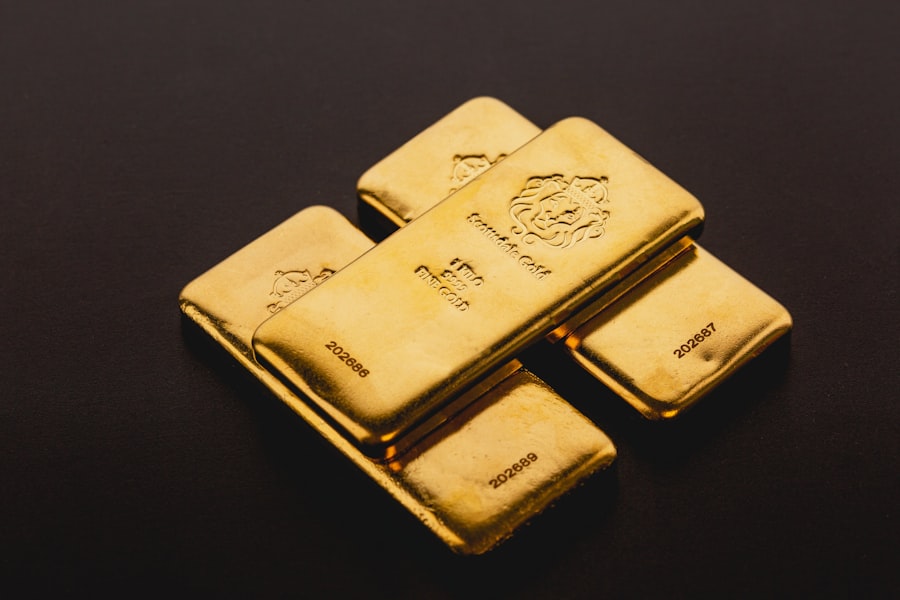The phenomenon of conflict gold has emerged as a significant issue in the global mining industry, particularly in regions plagued by war and instability. This term refers to gold that is mined in areas where armed conflict is taking place, often funding violent groups and perpetuating cycles of violence. The rise of conflict gold can be traced back to the late 20th century, when the demand for gold surged due to its status as a safe-haven asset and a symbol of wealth.
As prices soared, so did the incentive for illegal mining operations in conflict zones, where regulatory oversight is minimal or nonexistent. This has led to a troubling intersection of economic gain and human suffering, as the extraction of gold becomes intertwined with the financing of armed groups. In many cases, the allure of gold has drawn individuals into dangerous situations, where they are often exploited for their labor.
The rise of conflict gold is not merely an economic issue; it is a humanitarian crisis that affects millions of lives. As armed groups seize control of mining operations, they impose harsh conditions on workers, often resorting to violence to maintain their grip on power. The global demand for gold continues to fuel this cycle, creating a complex web of exploitation that is difficult to untangle.
The rise of conflict gold serves as a stark reminder of the darker side of the precious metal industry, highlighting the urgent need for awareness and action.
Key Takeaways
- Conflict gold fuels violence and human rights abuses in mining regions.
- Armed groups control and profit from illegal gold mining operations.
- Environmental damage from conflict gold mining severely impacts local ecosystems.
- Global trade networks enable the widespread distribution of conflict gold.
- Ethical sourcing and stronger regulations are crucial to ending the conflict gold trade.
The Impact of Conflict Gold on Communities
The impact of conflict gold on local communities is profound and multifaceted. In regions where gold mining is controlled by armed groups, the social fabric of communities often deteriorates. Families are torn apart as individuals are forced to flee their homes to escape violence or are coerced into working in dangerous conditions.
The promise of economic opportunity that gold mining presents is frequently overshadowed by the reality of exploitation and fear. Communities that once thrived on agriculture or traditional crafts find themselves caught in a cycle of dependency on an industry that offers little in terms of long-term stability or growth. Moreover, the presence of armed groups in mining areas can lead to increased violence and insecurity.
Local populations may be subjected to extortion, forced labor, and even recruitment into armed factions. This creates an environment where trust erodes, and social cohesion breaks down. The impact extends beyond immediate violence; it can also hinder access to education and healthcare, as resources are diverted to support conflict rather than community development.
The long-term consequences of conflict gold can be devastating, leaving communities trapped in a cycle of poverty and instability.
The Environmental Destruction Caused by Conflict Gold Mining

Conflict gold mining is not only a humanitarian issue but also an environmental one. The methods employed in illegal mining operations often disregard ecological considerations, leading to significant environmental degradation. Deforestation is rampant as miners clear land for operations, disrupting local ecosystems and contributing to biodiversity loss.
Rivers and streams are frequently contaminated with toxic chemicals used in the extraction process, such as mercury and cyanide, posing serious health risks to both local populations and wildlife. The environmental destruction caused by conflict gold mining has far-reaching implications. As ecosystems are disrupted, the natural resources that communities rely on for their livelihoods become increasingly scarce.
This can exacerbate existing tensions within communities and contribute to further conflict over dwindling resources. Additionally, the long-term effects of environmental degradation can hinder recovery efforts in post-conflict regions, making it even more challenging for communities to rebuild and thrive. The intersection of conflict gold mining and environmental destruction underscores the urgent need for sustainable practices in the industry.
The Role of Armed Groups in Conflict Gold Mining
| Metric | Description | Estimated Value / Data | Source / Region |
|---|---|---|---|
| Percentage of Gold Mines Controlled by Armed Groups | Proportion of gold mining sites under the control of armed groups in conflict zones | 30% – 50% | Eastern DRC (Democratic Republic of Congo) |
| Annual Gold Production from Conflict Mines | Estimated annual gold output from mines controlled by armed groups | 15 – 20 metric tons | Eastern DRC, Central African Republic |
| Revenue Generated by Armed Groups from Gold Mining | Estimated annual income earned by armed groups through gold mining activities | 100 – 200 million | Conflict regions in Africa |
| Number of Armed Groups Involved in Gold Mining | Count of distinct armed factions known to engage in gold mining operations | 10 – 15 | DRC, South Sudan, Central African Republic |
| Impact on Local Communities | Percentage of local population affected by armed group mining activities (displacement, violence) | 40% – 60% | Eastern DRC |
| International Efforts to Curb Conflict Gold | Number of certification and traceability initiatives implemented | 5 major programs | Global |
Armed groups play a pivotal role in the conflict gold trade, often using mining operations as a means to finance their activities.
In many cases, they establish a system of taxation on miners or demand a share of the profits, further entrenching their power within communities.
This dynamic creates a vicious cycle where armed groups thrive on the economic benefits of gold mining while perpetuating violence and instability. The involvement of armed groups in conflict gold mining complicates efforts to address the issue. Traditional approaches to conflict resolution may be ineffective when dealing with non-state actors who operate outside the law.
Understanding the role of armed groups in this context is crucial for developing strategies that address both the economic incentives driving conflict and the humanitarian crises that result from it.
The Human Rights Violations Associated with Conflict Gold
The human rights violations associated with conflict gold are numerous and severe. Workers in conflict zones often face exploitation, including forced labor, inadequate wages, and unsafe working conditions. Many individuals are coerced into mining operations through threats or violence, stripping them of their autonomy and dignity.
Women and children are particularly vulnerable in these environments, often subjected to sexual violence and trafficking as armed groups exploit their desperation. Additionally, the broader impact on communities cannot be overlooked. As violence escalates around mining operations, individuals may be displaced from their homes or forced to live in constant fear.
Access to basic services such as education and healthcare becomes increasingly limited as resources are diverted to support armed factions rather than community needs. The human rights violations associated with conflict gold highlight the urgent need for accountability and reform within the industry, as well as greater awareness among consumers about the origins of their products.
The Global Trade of Conflict Gold

The global trade of conflict gold is a complex network that spans continents and involves numerous actors. While much of the gold mined in conflict zones is smuggled out through illicit channels, it eventually finds its way into legitimate markets around the world. This creates a significant challenge for regulators and consumers alike, as tracing the origins of gold becomes increasingly difficult.
The lack of transparency in the supply chain allows conflict gold to enter mainstream markets without scrutiny, perpetuating the cycle of violence and exploitation. The global demand for gold continues to drive this trade, with investors seeking safe-haven assets during times of economic uncertainty. As prices rise, so does the incentive for illegal mining operations in conflict zones.
This dynamic underscores the need for greater awareness among consumers about the ethical implications of their purchases. By understanding how their demand for gold contributes to conflict and human rights abuses, individuals can make more informed choices that promote ethical sourcing practices.
Efforts to Combat Conflict Gold
Efforts to combat conflict gold have gained momentum in recent years, driven by increased awareness among consumers and advocacy groups. Various initiatives have been launched to promote responsible sourcing practices within the gold industry. For instance, organizations such as the Responsible Jewelry Council have developed standards aimed at ensuring that gold is sourced ethically and transparently.
These initiatives seek to create a framework for accountability within the supply chain, encouraging companies to take responsibility for their sourcing practices. Additionally, international regulations have been proposed to address the issue of conflict minerals more broadly. The Dodd-Frank Act in the United States includes provisions aimed at curbing the trade in conflict minerals, including gold sourced from war-torn regions.
While these regulations represent a step forward, challenges remain in enforcement and compliance. Continued advocacy and collaboration among stakeholders—governments, NGOs, and industry leaders—are essential for creating meaningful change in combating conflict gold.
The Responsibility of Jewelry and Electronics Companies in the Conflict Gold Trade
Jewelry and electronics companies play a crucial role in addressing the issue of conflict gold within their supply chains. As major consumers of gold, these companies have a responsibility to ensure that their sourcing practices do not contribute to human rights abuses or environmental degradation. Many companies have begun implementing due diligence measures to trace the origins of their gold and ensure it is sourced from responsible suppliers.
However, challenges persist in achieving full transparency within supply chains. The complexity of sourcing materials from multiple suppliers can make it difficult for companies to verify the origins of their gold accurately. To address this issue, collaboration among industry stakeholders is essential.
By working together to establish common standards and best practices for ethical sourcing, companies can collectively reduce the risk of conflict gold entering their supply chains.
The Role of Governments in Regulating Conflict Gold
Governments play a critical role in regulating the trade of conflict gold and ensuring that ethical sourcing practices are upheld within their jurisdictions. Effective regulation requires a multi-faceted approach that includes monitoring mining operations, enforcing laws against illegal mining activities, and promoting transparency within supply chains. Some countries have implemented legislation aimed at curbing the trade in conflict minerals; however, enforcement remains a significant challenge.
International cooperation is also essential in addressing the global nature of the conflict gold trade. Collaborative efforts among governments can help establish common standards for responsible sourcing and create mechanisms for sharing information about illicit activities. By working together, governments can strengthen their ability to combat conflict gold effectively while promoting human rights and environmental sustainability.
The Importance of Ethical Sourcing in the Gold Industry
Ethical sourcing has become increasingly important in the gold industry as consumers demand greater accountability from companies regarding their supply chains. By prioritizing ethical sourcing practices, companies can contribute to positive change within communities affected by conflict gold mining while also enhancing their brand reputation among socially conscious consumers. Ethical sourcing involves not only ensuring that materials are obtained without contributing to violence but also supporting fair labor practices and environmental sustainability.
The importance of ethical sourcing extends beyond individual companies; it has implications for entire industries and economies. By promoting responsible practices within the gold supply chain, companies can help create a market that values human rights and environmental stewardship over profit at any cost. This shift toward ethical sourcing represents an opportunity for transformative change within the industry, fostering a more sustainable future for all stakeholders involved.
The Future of Conflict Gold and Potential Solutions
The future of conflict gold remains uncertain as global demand continues to drive illicit mining operations in war-torn regions. However, there is hope for change through increased awareness and advocacy efforts aimed at promoting ethical sourcing practices within the industry. As consumers become more informed about the implications of their purchases, they can exert pressure on companies to prioritize responsible sourcing.
Potential solutions include enhancing transparency within supply chains through technology such as blockchain, which can provide traceability for materials from mine to market. Additionally, fostering collaboration among governments, NGOs, and industry stakeholders can create a unified approach to combating conflict gold effectively. By addressing both the economic incentives driving conflict and supporting community development initiatives, stakeholders can work toward a future where gold is sourced ethically and responsibly—free from violence and exploitation.
In conclusion, while challenges remain in addressing the issue of conflict gold, concerted efforts from all sectors—governments, companies, consumers—can pave the way for meaningful change within this complex landscape. Through collaboration and commitment to ethical practices, there is potential for a future where communities thrive without being burdened by the weight of conflict-driven exploitation.
In recent discussions surrounding the ethical implications of conflict gold, a comprehensive investigation has shed light on the intricate networks that facilitate the trade of this precious resource. For a deeper understanding of the complexities involved, you can read more in the related article available at this link. This article delves into the socio-economic impacts of conflict gold mining and the efforts being made to promote responsible sourcing practices.
WATCH THIS! The Secret War for Africa’s Gold: How Private Armies Fund Global Conflict
FAQs
What is conflict gold?
Conflict gold refers to gold that is mined in areas controlled by armed groups or where mining activities contribute to human rights abuses, environmental damage, or funding of violent conflicts.
Why is conflict gold a concern?
Conflict gold is a concern because its extraction and trade can finance armed groups, perpetuate violence, exploit workers, and cause environmental degradation, undermining peace and development in affected regions.
Which regions are most affected by conflict gold?
Regions most affected by conflict gold include parts of Central and West Africa, such as the Democratic Republic of Congo, as well as some areas in South America and Southeast Asia where governance is weak and armed groups operate.
How is conflict gold identified and traced?
Conflict gold is identified and traced through supply chain due diligence, certification schemes, and monitoring programs that verify the origin of gold and ensure it is sourced responsibly and legally.
What measures are in place to prevent the trade of conflict gold?
Measures include international regulations like the Dodd-Frank Act Section 1502, industry-led initiatives such as the Responsible Jewellery Council, and government import restrictions aimed at promoting transparency and ethical sourcing.
How can consumers avoid purchasing conflict gold?
Consumers can avoid conflict gold by buying from reputable jewelers who provide transparency about their sourcing, looking for certifications like Fairtrade or Responsible Jewellery Council membership, and supporting companies committed to ethical supply chains.
What role do governments play in addressing conflict gold?
Governments implement laws and regulations to restrict the import and trade of conflict gold, support international cooperation, and promote responsible mining practices to reduce the impact of conflict gold on affected communities.
What impact does conflict gold have on local communities?
Conflict gold mining often leads to human rights abuses, including forced labor and child labor, environmental harm, displacement of communities, and perpetuation of violence, negatively affecting the well-being and development of local populations.




